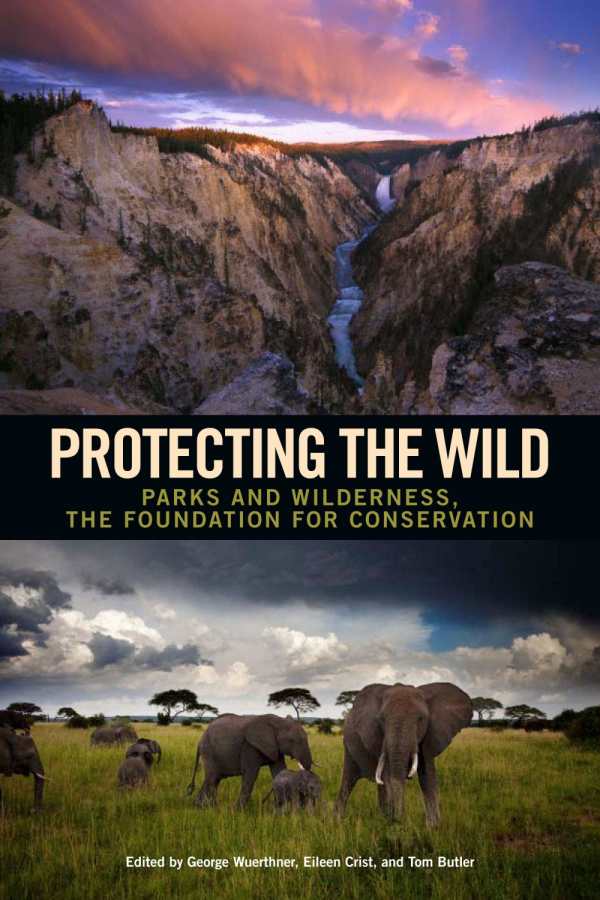Protecting the Wild
Parks and Wilderness, the Foundation for Conservation
This in-depth analysis of environmental conservation shows how seeking new responses to decreasing biodiversity can offer hope.
Editors George Wuerthner, Eileen Crist, and Tom Butler deliver a powerful collection of environmental essays in this companion book to Keeping the Wild. Their focus is a response to the New Conservation Science (NCS), a movement against the tradition of conservation of wildland areas, since the American Wilderness Act of 1964.
Terms associated with the environmental movement, like sustainability and global warming, are expanded within a lexicon including “trophic cascade,” “compassionate conservation,” and the “human garden.” Tropical ecologist John Terborgh succinctly defines the central problem affecting the earth’s biodiversity; in the absence of large predators (think wolf and mountain lion), hungry herbivores (such as deer) and mesopredators (such as raccoons and feral cats) create an imbalance in natural ecosystems that results in the biodiversity crisis known as extinction (or the ominous-sounding “trophic cascade”).
The central argument in Protecting the Wild involves the reintroduction of large predators in a global “re-wilding” to create predatory balance among species and forestall extinction. Scientists, academics, and conservation practitioners from around the world ask, “Should the primary goal of conservation be to establish systems of interconnected conservation reserves [e.g.; national parks] intended to halt the extinction crisis” and sustain what remains of earth’s diverse biota? “Or is such a goal of planetary re-wilding a naive dream in a time of ballooning human numbers?” Or, as the NCS argues, “Should conservation give up on its core commitment of stopping anthropogenic extinctions and instead focus on humanized, managed landscapes intended to produce ‘ecological services’ for people?”
Jane Goodall, Harvey Locke, Marc Bekoff, and Douglas Tompkins are among the many who make the case for the re-wilding and conservation of interconnected “wildways” (protected from human highways) that will support large predators, thus rebalancing earth’s biodiversity and ultimately the health of both animals and humans.
Ecocide is suicide, warns Bekoff. After all, “The forests are the lungs of the world,” says Goodall, and Tompkins echoes, “Wildness is the breath and heartbeat of Nature herself.” Through education and their particular model of global conservation, these voices call for more than action.
Reviewed by
Kai White
Disclosure: This article is not an endorsement, but a review. The publisher of this book provided free copies of the book to have their book reviewed by a professional reviewer. No fee was paid by the publisher for this review. Foreword Reviews only recommends books that we love. Foreword Magazine, Inc. is disclosing this in accordance with the Federal Trade Commission’s 16 CFR, Part 255.

